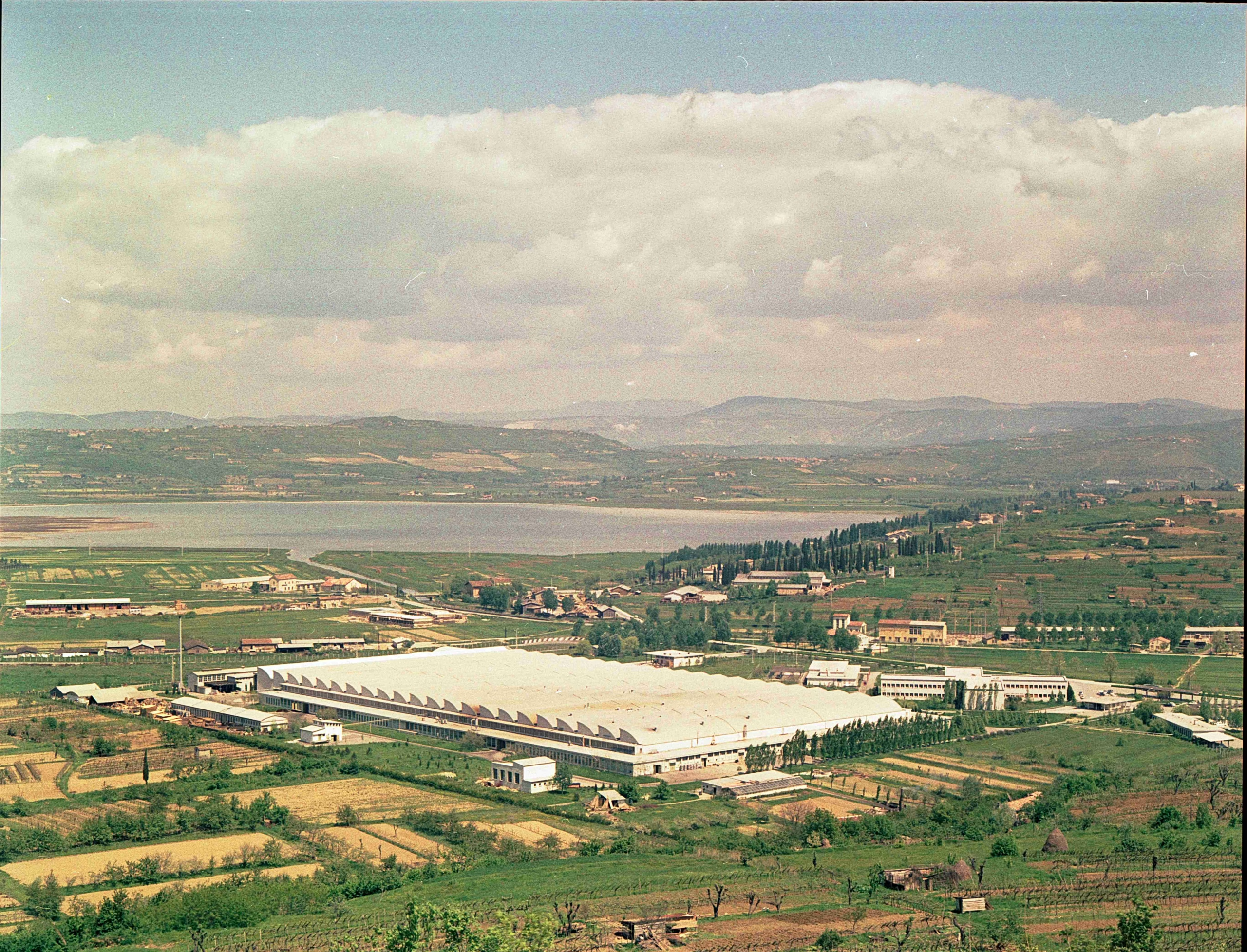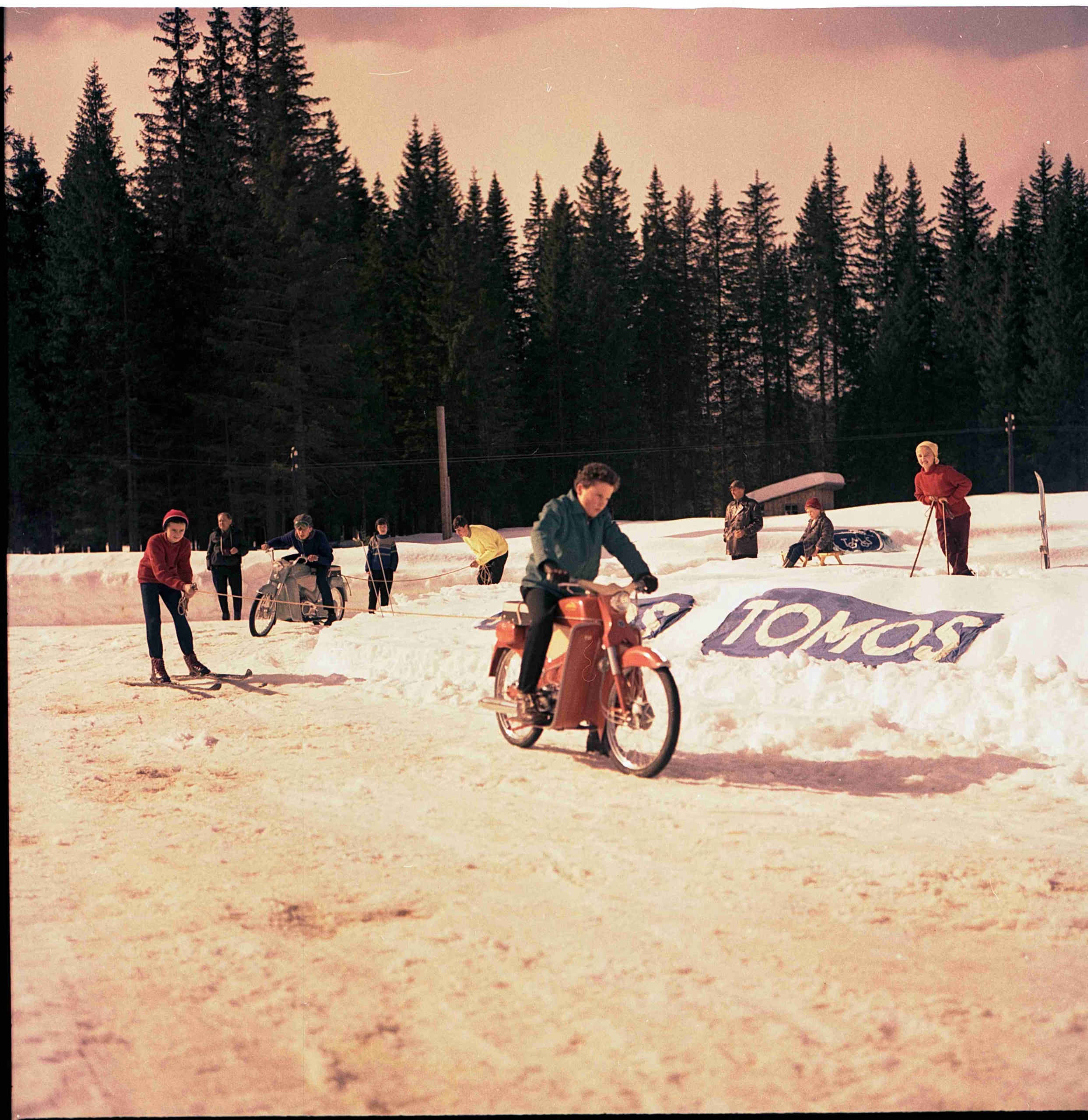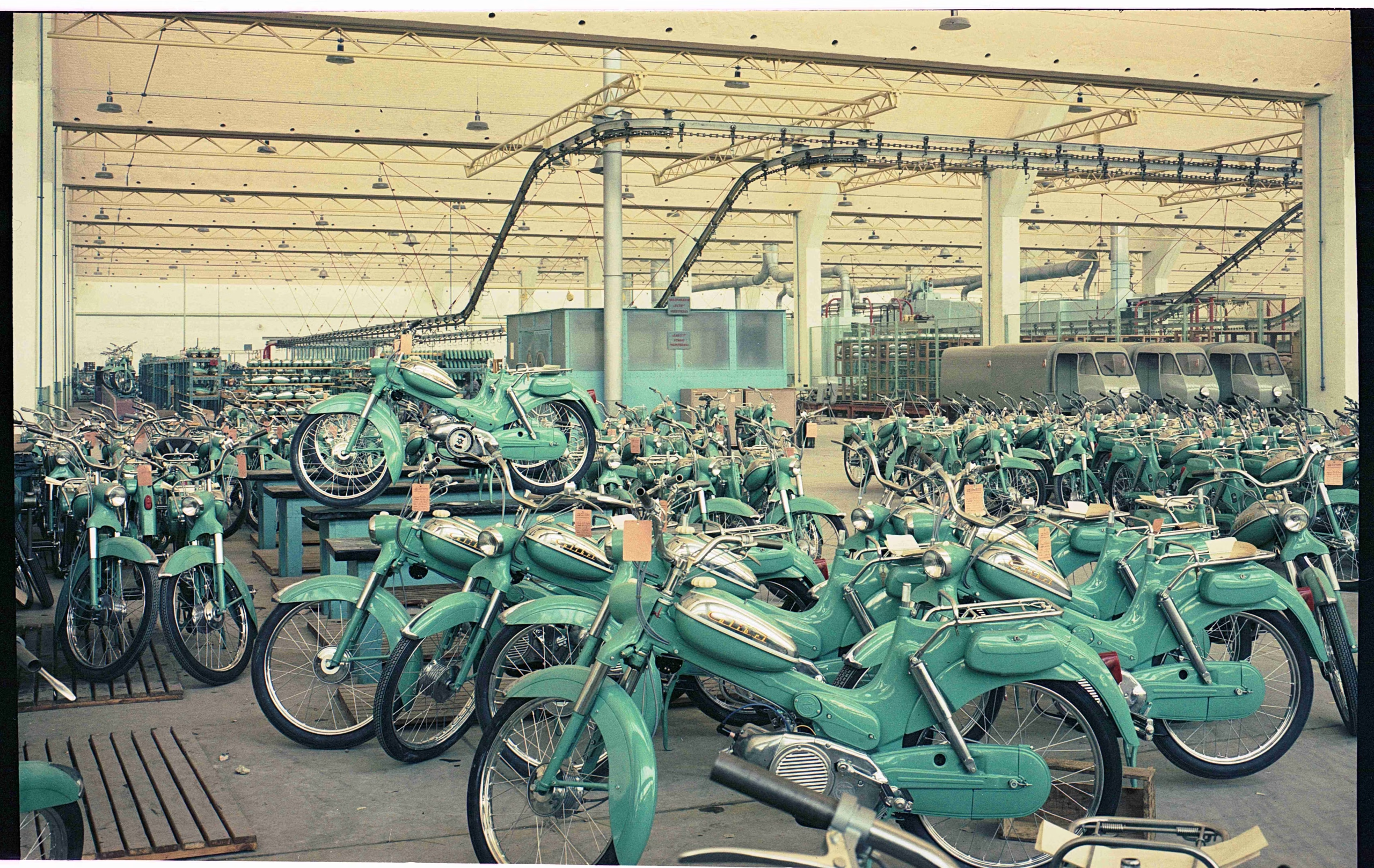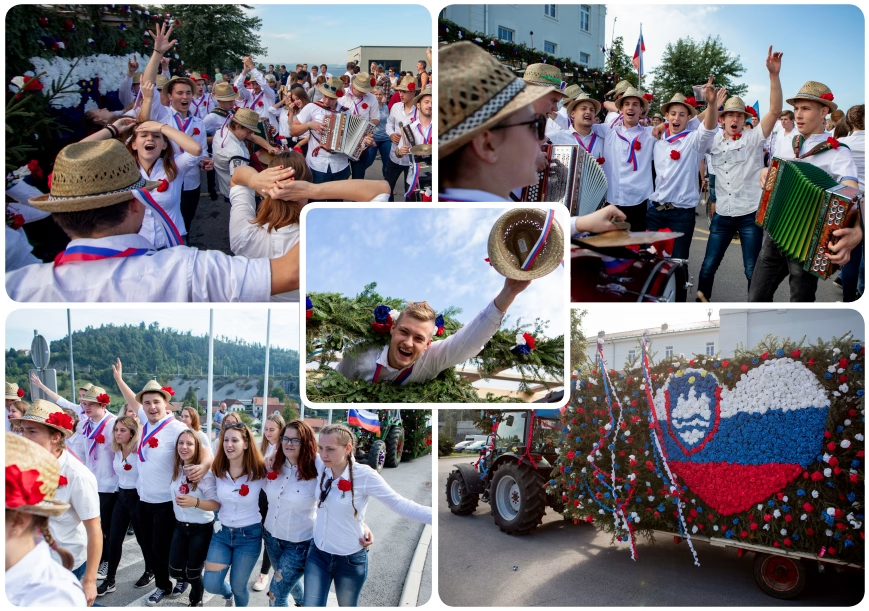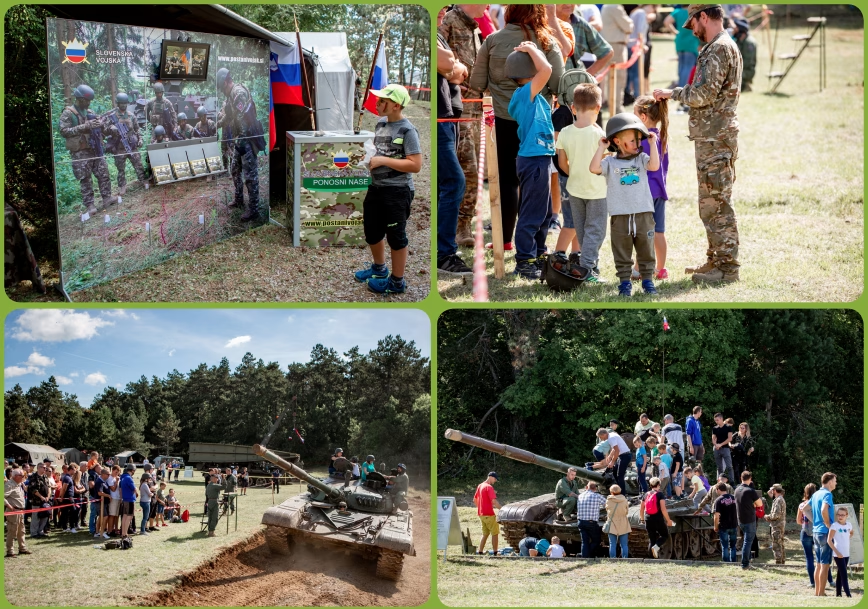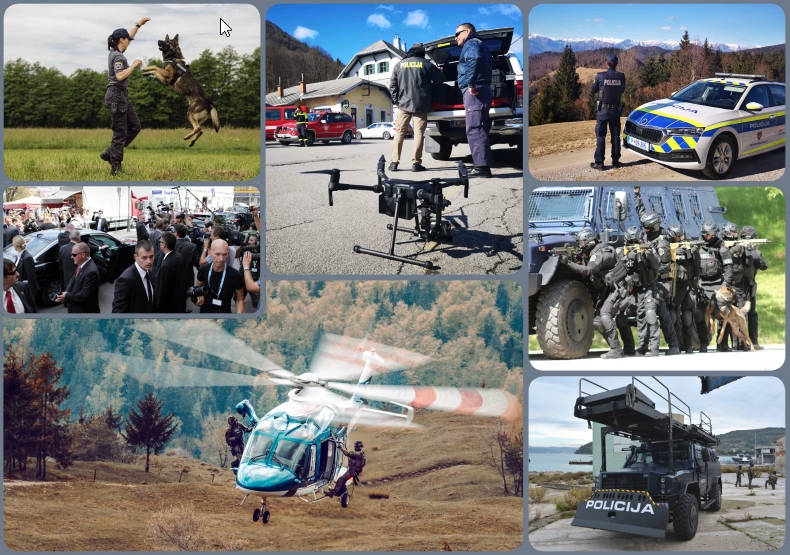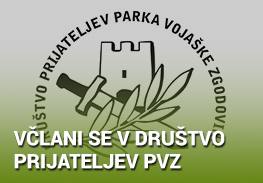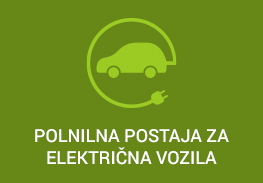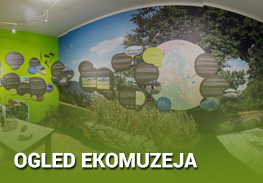Opening hours in November
The Park of Military History will be open in November from Monday to Friday between 10:00 and 15:00, and on Saturdays and Sundays between 10:00 and 16:00.
A prior reservation is required for guided tours of the interior of the submarine and the police boat P-111 as part of the additional museum offer. Reservations can be made by phone at +386 (0)31 775 002 or by e-mail at [email protected].
Opening Hours in October
In October, the Park of Military History will be open from Monday to Friday between 10:00 and 16:00, and on Saturdays and Sundays between 10:00 and 18:00.
During the autumn holidays, from 27 October to 2 November, the Park of Military History will be open from 09:00 to 17:00.
For visits inside the submarine and the police patrol boat P-111, as an additional museum attraction, advance booking is required by telephone on +386 (0)31 775 002 or by e-mail at [email protected].
Tomos Drives into (Oblivion) Archives
The exhibition Tomos Drives into Oblivion Archives, which was prepared by the Regional Archives Koper, highlights the importance of preserving the archival heritage of Tomos, once one of the most important industrial companies in Slovenia and the former Yugoslavia.
The Tomos company was founded in Sežana in 1954, at a time when Yugoslavia urgently needed a factory that would manufacture vehicles adapted to domestic roads and the financial capabilities of the population. In 1959, a new factory complex was built in Koper, where it became a symbol of the industrialization of the Primorska region. The company developed rapidly and adapted to market conditions, and in the 1960s, with the decline in interest in heavier motorcycles, it shifted its production to mopeds with smaller engines (up to 50 cm3), which became an indispensable means of transport, especially for people with low and medium personal incomes. In the 1960s and 1970s, Tomos opened branches in the Netherlands, China, and even Ghana. Despite successful moped models such as the Colibri 12 and collaborations with European companies such as Citroën and Electrolux, Tomos faced various challenges (changing government regulations and market conditions as well as inflation). In the 1980s, they modernised and expanded their production, but the difficult political and economic situation in Yugoslavia and the burden of Tomos’s old loans led to bankruptcy in 1989. In the 1990s, the company operated under various owners, exporting its products to the Netherlands, the United States and the countries of the former Yugoslavia, and also diversifying into other industries. Tomos persevered until 2018, when they filed for bankruptcy, and the following year, its industrial history spanning more than six decades came to an end.
Before the Tomos Institute was demolished in 2023, employees of the Regional Archives Koper discovered that the building still contained all of the construction and technical documentation. This came as a surprise, as it was generally assumed that this documentation had been destroyed in a fire on New Year’s Eve 2002. Rainwater leaks, mould and pests left irreparable damage to the material – many documents were partially or completely destroyed.
Archiving and digitising technical drawings and thousands of negatives, slides and photographs in the SI_PAK/1046 – TOMOS Koper archive collection is a long-term project that is far from complete, but will undoubtedly help preserve the memory of Tomos as a symbol of technical knowledge, creativity and economic self-confidence. In addition to collaborating with renowned companies such as BMW, IKEA and Electrolux, Tomos has been shaping the mobility of several generations both at home and abroad.
Opening Hours in September
The Park of Military History will be open in September from Monday to Friday between 10:00 and 16:00, and on Saturdays and Sundays between 10:00 and 18:00.
For visiting the interior of the submarine and the police boat P-111, as part of the additional museum offer, prior reservation is required at tel. +386 (0)31 775 002 or via e-mail at [email protected]

From 19 to 21 September, ZgodoVikend – the largest event in the Park of Military History, traditionally held on the third weekend of September – will take place.
As an introduction to the rich programme of ZgodoVikend, the traditional Vestirnga 2025 will already be held on Friday, during which the Defence Administration will introduce the military conscripts of the 2007 generation. On this occasion – just like generations before – they will arrive on richly decorated conscription wagons.
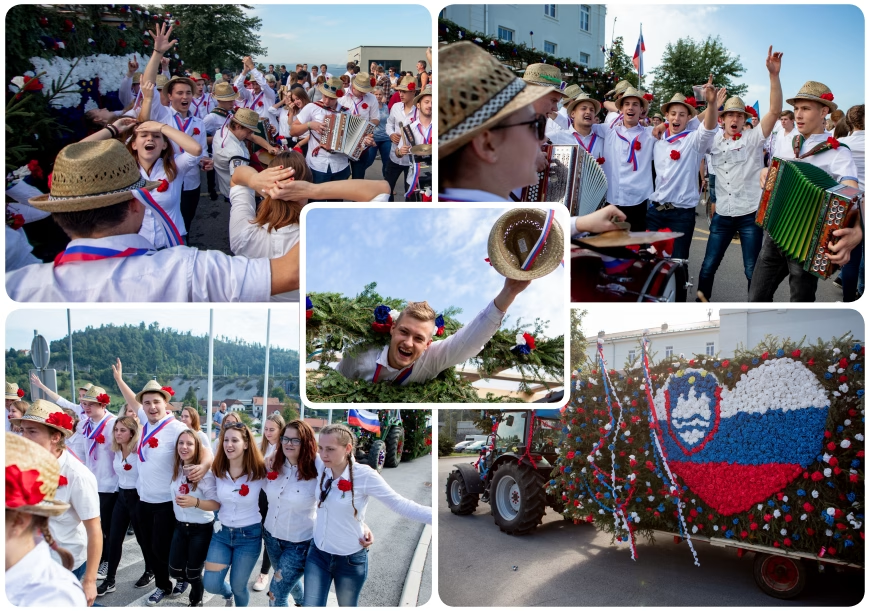
Saturday’s programme will begin with a hike to Primož hill, accompanied by a lecture in the former Italian underground fortress of the Alpine Wall and a guided tour of the interior. Visitors will then be able to take part in various guided tours of collections and exhibitions, while the youngest will enjoy diverse children’s workshops. As part of the accompanying programme, an open day will also take place at the Stanislav Požar Barracks, where visitors will experience what it is like to ride in a tank and what life in the Slovenian Armed Forces is like.
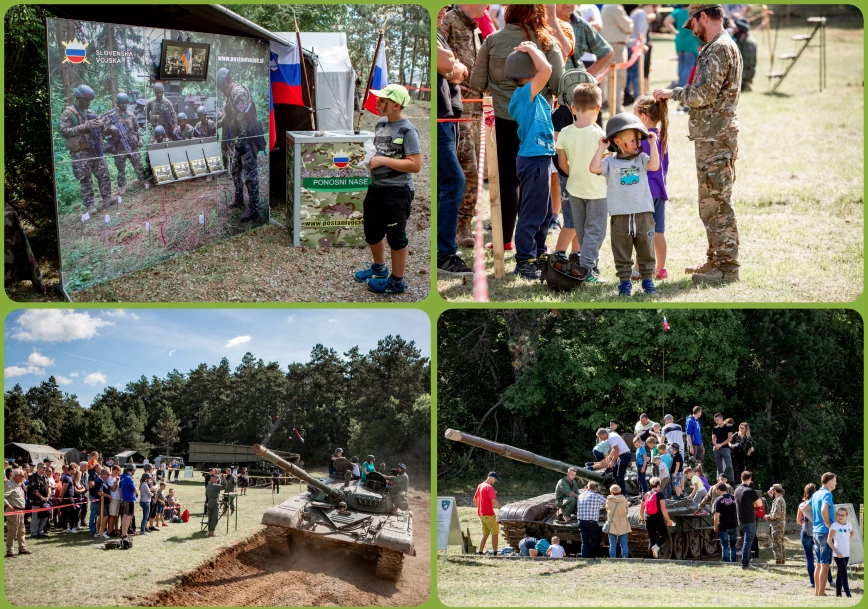
Sunday`s programme will be enriched by numerous expert-guided tours of permanent and temporary exhibitions, providing participants with deeper insights into the Park`s exhibits and collections. In cooperation with partner museums, a variety of workshops and animations will take place, presenting selected historical topics to the youngest visitors in an educational and entertaining way. The programme will also feature film screenings, a mini fair of military-historical literature, a presentation of vintage vehicles, as well as static and dynamic presentations by the Slovenian Armed Forces, Civil Protection, fire brigades, and the Police. One of the highlights of ZgodoVikend will be the Sunday demonstration rides of vehicles from the operational part of the collection of the Military Museum of the Slovenian Armed Forces and the Park of Military History.
The detailed event programme is available at the following link: ZgodoVikend.
ZgodoVikend (History Weekend)
ZgodoVikend is the largest event at the Park of Military History, traditionally held on the third weekend of September – this year on 19, 20, and 21 September 2025.
The rich programme of ZgodoVikend will already begin on Friday with the traditional Vestirnga 2025. As part of the event, the Defence Administration will introduce military conscripts of the 2007 generation, who will – just like in the past – arrive decorated on recruitment wagons.
The Saturday programme starts with a hike to Primož, accompanied by a thematic lecture in the former Italian underground fortress of the Alpine Wall and a guided tour of the fort’s interior. As part of the extended programme, visitors can join various guided tours of the collections and exhibitions, while the youngest will enjoy a range of children’s workshops.
As part of the accompanying programme, an open day at the Stanislav Požar Barracks will also take place, where you can experience a tank ride and learn what life in the uniform of the Slovenian Armed Forces is like.
Sunday’s museum pulse will be enriched with numerous expert-guided tours of permanent and temporary exhibitions, giving participants a deeper insight into the content and background of individual exhibits and collections. In cooperation with partner museums, a varied set of workshops and activities will also be organised, through which selected chapters of history will be presented to children educationally and entertainingly.
The programme will be further enhanced by film screenings, a small fair of military-historical literature, an exhibition of vintage vehicles, and static and dynamic presentations by the Slovenian Armed Forces, Civil Protection, Fire Brigades, and Police. One of the highlights of ZgodoVikend will be demonstration rides of vehicles from the operational collection of the Military Museum of the Slovenian Armed Forces and the Park of Military History.
PROGRAMME of ZgodoVikend:
Friday, 19 Sept 2025
10.00 – Introduction of the 2007 generation of conscripts and presentation of recruitment wagons and the Slovenian Armed Forces – Vestirnga 2025
Saturday, 20 September 2025, from 9.00 to 18.00
*10.00–17.00 Open Day of the Stanislav Požar Barracks in Pivka
12.00–15.00 Children’s workshops
**9.00 Walk through history: hike to Primož Hill and visit of the interior of the Alpine Wall fortification
10.30 Guided tour of exhibitions and collections of the Park of Military History in Slovenian Sign Language (Komanda, ground floor)
11.00 Opening of the guest exhibition of the Slovenian Armed Forces Military Museum: Artillery in brief and presentation of the restoration of the German field howitzer leFH 18/40
12.00 Guided tour of exhibitions and collections in pavilions A, B and C
13.00 Guided tour of the exhibition War until the End: the Rijeka–Trieste Operation in April and May 1945
15.00 Opening of the guest exhibition of the Regional Archives Koper: Tomos speeds into (oblivion) archives
Depositories of the National Museums (Building D):
10.00–14.00 Independent viewing of collections
14.00–15.00 Guided tour of the collections from National Museum of Contemporary Histroy of Slovenia and National Museum of Slovenia
15.00–16.00 Independent viewing of collections
Admission to the depositories is charged according to their price list – €2/person.
Sunday, 21 September 2025, from 9.00 to 18.00
**9.30 Walk through history: hike to Primož Hill and visit of the interior of the Alpine Wall fortification
10.00 Demonstration drive by the Society of Slovenian Policemen with legendary vehicles of the former Milica
11.00 Dynamic presentation of the Police (Special Unit of the Slovenian Police and Police Air Support Unit)
12.30 Performance by vintage firefighters society from PGD Studeno with a firefighting demonstration
13.00 Dynamic presentation of PGD Postojna
14.00 Demonstration rides of vehicles from the collections of the Slovenian Armed Forces Military Museum and the Park of Military History
15.00 Dynamic presentation of the Slovenian Armed Forces (15th Brigade of Military Aviation and Air Defence and 17th Battalion of Military Police of the Slovenian Armed Forces)
16.00 Guided tour of the exhibition Saving Lives Together (guided by Srečko Šestan, Commander of the Civil Protection of the Republic of Slovenia)
17.00 Guided tour of the new exhibition War until the End: the Rijeka–Trieste Operation in April and May 1945
10.00–17.00 Static presentation of the Slovenian Armed Forces
10.00–17.00 Static presentation of the Police
10.00–17.00 Static presentation of firefighters
10.00–17.00 Presentation of the Society of Slovenian Policemen with legendary vehicles of the former Milica
10.00–17.00 Presentation of the Society of Vintage Firefighters from PGD Studeno
10.00–17.00 Presentation of the Rescue Dog Handlers Club Postojna
10.00–17.00 Presentation of the Vintage Car Enthusiasts Club Balila
10.00–17.00 Demonstration of knife forging – Kruška Blacksmithing
10.00–17.00 Luka’s Den mobile barber shop Shavy
10.00–17.00 Book fair of military history literature, militaria fair and local products
10.00–16.00 CHILDREN’S WORKSHOPS
Park of Military History
Notranjska Museum Postojna
Dina Large Carnivore Centre
Ecomuseum of the Pivka Intermittent Lakes
Computer Museum
Depositories of the National Museums (Building D):
10.00–17.00 Smiling and moving pictures – children’s workshop National Museum of Contemporary Histroy of Slovenia
10.00–11.00 Independent viewing of collections
11.00–11.30 Happiness and joy in the photographs of Marjan Ciglič – guided tour of the National Museum of Contemporary Histroy of Slovenia 2025 depository exhibition
11.30–12.00 Guided tour of National Museum of Contemporary Histroy of Slovenia collections
12.00–17.00 Independent viewing of collections
Admission to the depositories is charged according to their price list – €2/person.
ADMISSION
On the day of the event, the regular price list of the Park of Military History applies – Price List 2025.
VISIT OF THE INTERIOR OF THE SUBMARINE OR POLICE BOAT
Advance booking is MANDATORY at +386 31 775 002 or [email protected].
ACCESS AND PARKING – Sunday, 21 September 2025
We recommend a sustainable arrival by train – Pivka railway station is only a 15-minute walk from the Park.
If arriving by car:
– free parking will be available in designated car parks,
– between 11.00 and 17.00 a free shuttle service will run between the car parks and the Park.
We recommend arriving on time, as activities will be lively from the early morning!
NOTICE
The event will be photographed and filmed. Photographs and recordings will be used for promotional purposes of the Park of Military History. Visitors agree that in case of audio or photo recording of the event, they themselves may also be recorded.
The organiser does not guarantee for lost or damaged items of visitors.
Visitors must follow the instructions of the organiser’s security service.
———————————————–
*Stanislav Požar Barracks, Kolodvorska 59, 6257 Pivka (1 km from the Park towards Ilirska Bistrica)
** The hike is suitable for all generations. The participation fee for the hike is €5. Children up to 6 years can join for free. To visit the interior of the underground fortification on Primož, please bring torches. Hiking shoes and clothing are recommended. Parking is available at the Park of Military History. Participation is at your own risk. In case of bad weather, the hike will be cancelled.
The Summer Archaeological School on Baba above Slavina
The summer archaeological school Wolves and Caesars returned for the third time to explore the archaeological site at Baba Hill above Slavina. A team of six students from the University of Oshkosh, Wisconsin (USA), led by Professors Dr. Adrienne Frie and Dr. Kevin Gartski, in cooperation with the National Museum of Slovenia, the Institute of Archaeology at the Research Centre of the Slovenian Academy of Sciences and Arts (ZRC SAZU), and with the support of the Park of Military History, carried out archaeological excavations and analyzed lidar terrain scans in an effort to identify the function of a structure currently under investigation.
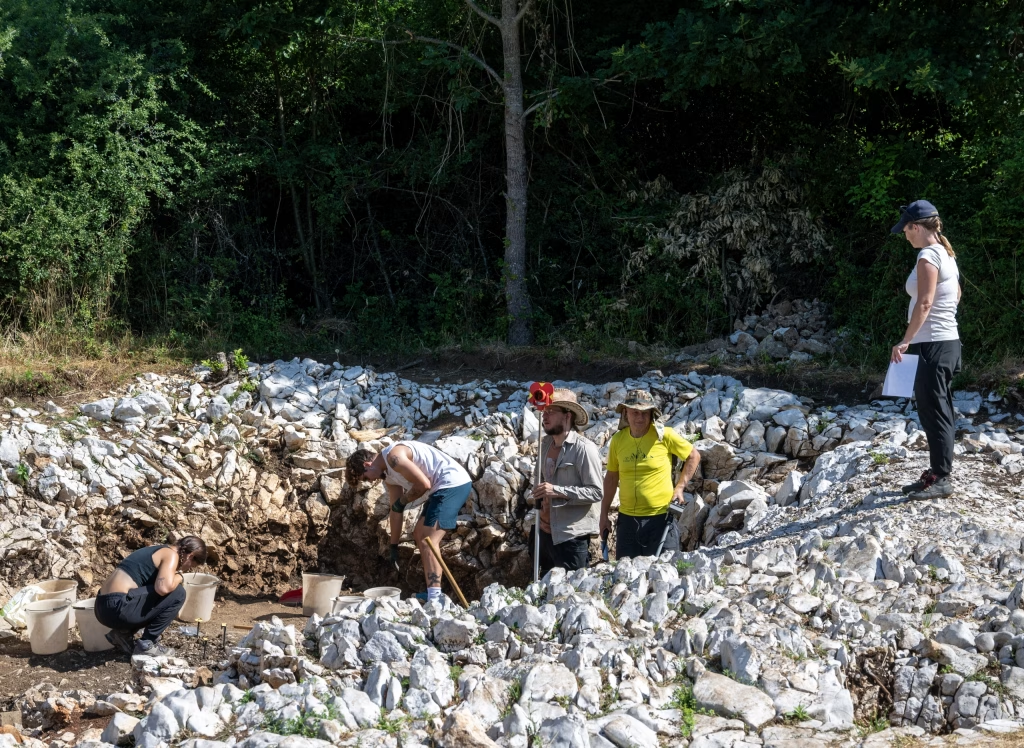
The archaeological site at Baba Hill is notable for the remains of a large fortified settlement, dated from the end of the Bronze Age to the Roman period. The significant local importance of this prehistoric settlement is evidenced by the still-visible remains of a massive stone wall, which included what appears to have been a defensive tower at its westernmost point. Based on field assessments, the stone fortification measured between three and four meters in width, and two possible entrances to the settlement remain discernible today. The interior was densely populated and divided into residential and industrial areas.
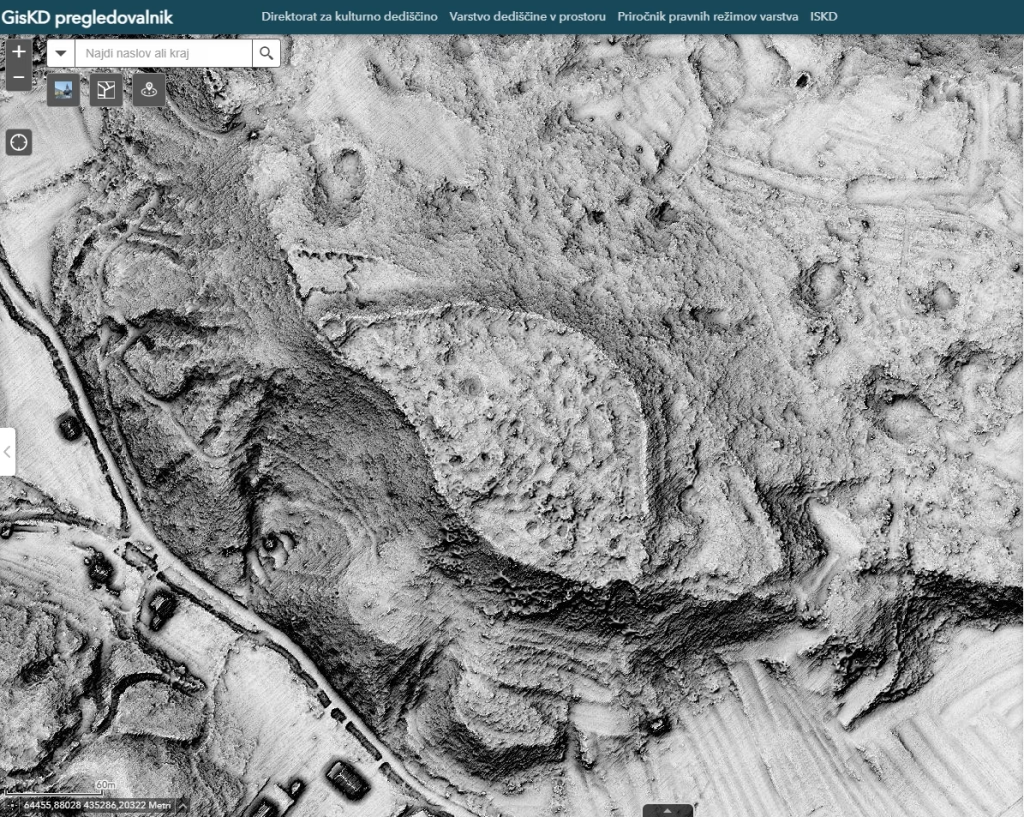
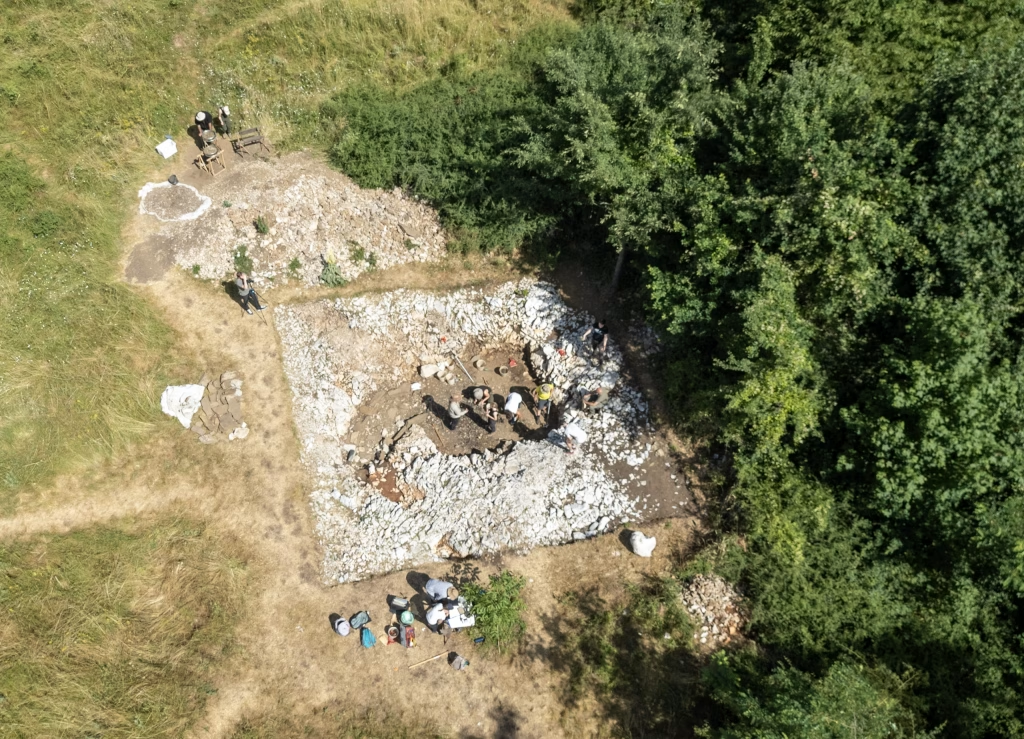
This year’s excavations revealed almost the entire structure, which was likely used by prehistoric inhabitants of the hilltop settlement as a workshop. The building underwent at least one major reconstruction during its period of use, though the exact function and continuity of the structure will be determined through further laboratory analysis of archaeological finds and stratigraphic layers. Among the notable discoveries this year were large quantities of animal bones, remains of fibulae (bronze brooches), and various fragments of metal objects, including a Roman hobnail from military sandals. The American students were especially excited by the discovery of Celtic silver coins and larger fragments of elaborately crafted Roman tableware and amphorae. The variety of finds confirms contact between the local prehistoric population and the Roman Republic, while also raising new questions regarding the fate of the settlement and its inhabitants at the threshold between prehistory and antiquity. The historical developments in this region were undoubtedly complex.
Based on current findings, two scenarios are proposed regarding the end of the settlement above Slavina. In the 1st century BCE, Gaius Julius Caesar, during his proconsulship in Gaul, was responsible for the administration and defense of northern Italy and for recruiting auxiliary troops, including from the area of present-day western Slovenia. Caesar established his operational headquarters for the Gallic campaigns in Aquileia. It is highly plausible that the local population resisted conscription into Caesar’s legions, which may have prompted a Roman military intervention and the subsequent destruction of rebellious hillforts. An alternative interpretation places the event several decades later, during the military campaign of Octavian—Caesar’s successor and the first Roman emperor Augustus—who led a large-scale military operation against Illyricum through this region.
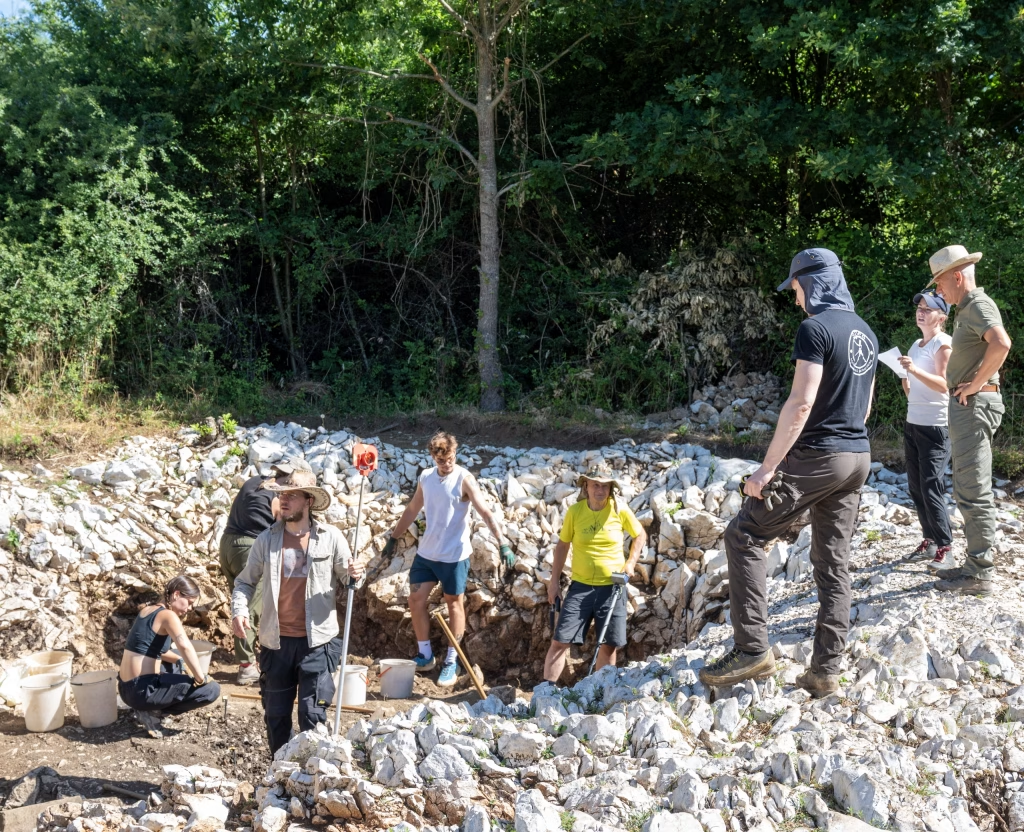
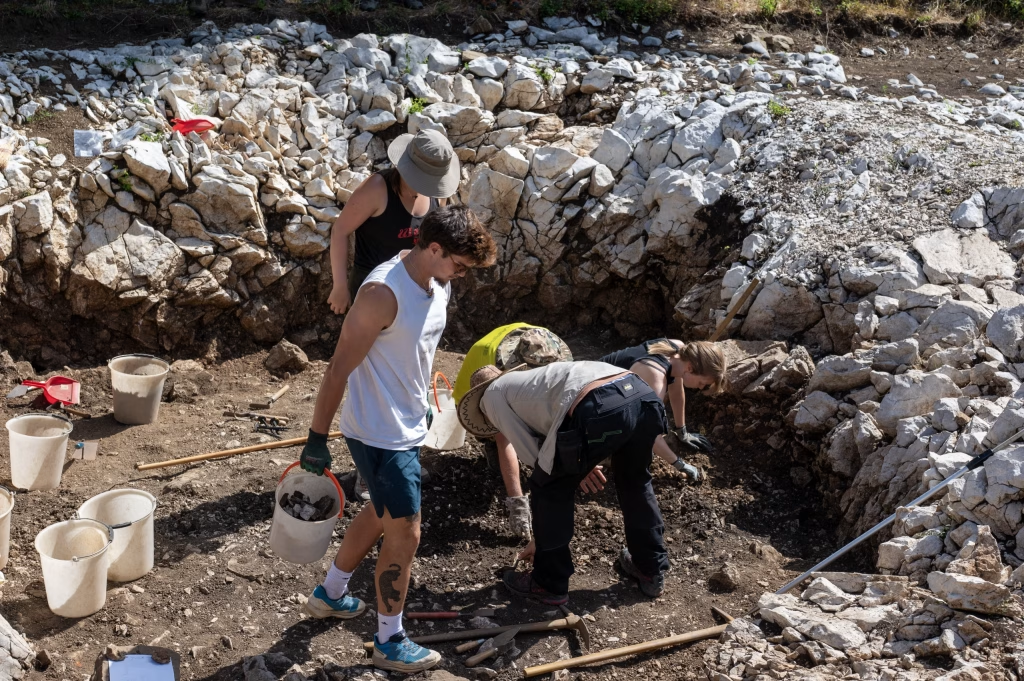
The summer archaeological school is also strongly embedded in the local community, with valuable support provided by the Slavina Local Community and the Slavina Cultural Society. As in previous years, a public presentation of the school’s work and research findings was organized on June 20 at the Cultural Centre in Slavina. Dr. Boštjan Laharnar from the National Museum of Slovenia presented this year’s discoveries and insights to local residents. On this occasion, a small exhibition was also opened, informing the public about the archaeologists’ work and findings, placing them within the broader context of the group of hillforts surrounding Slavina and the region’s historical developments.

